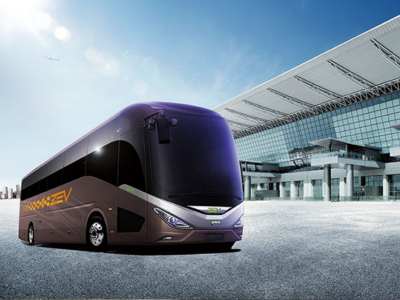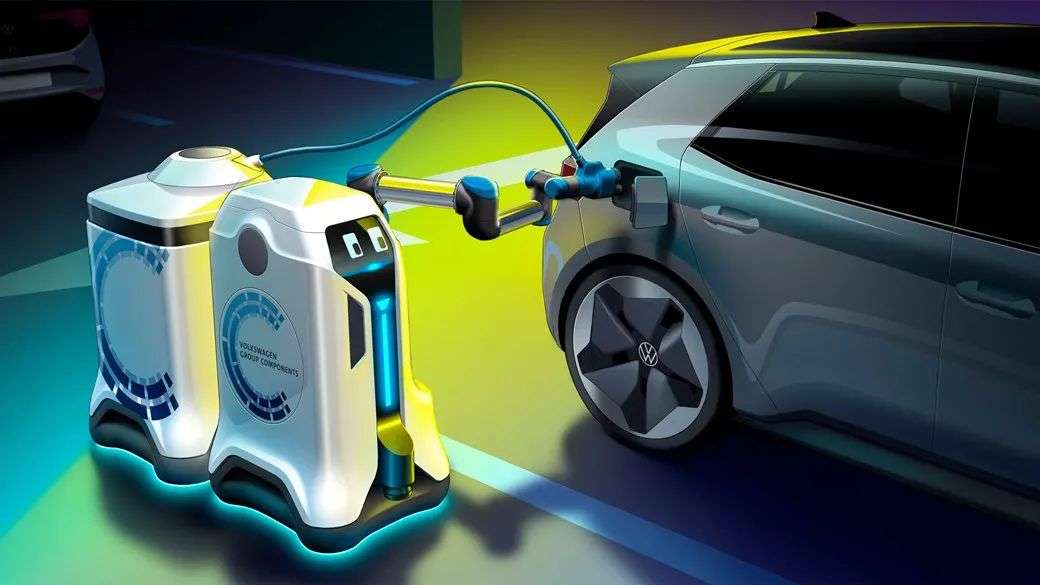Choosing the Right Electric Car Motor for Performance and Range
Introduction
The electric vehicle (EV) revolution is reshaping the automotive industry, offering an eco-friendly alternative to traditional internal combustion engine (ICE) vehicles. At the heart of this transition lies the electric car motor, a key component that determines both the performance and range of the vehicle. Selecting the right motor is crucial because it directly impacts acceleration, driving dynamics, and the efficiency of the vehicle, which translates into how far the vehicle can go on a single charge.
The importance of the electric car motor extends beyond performance to include range, making it a critical decision for consumers who are looking to maximize their driving experience and minimize the frequency of recharging. As electric vehicle technology continues to evolve, one of the significant advancements is the direct motor drive system, which aims to optimize both performance and range by eliminating some of the inefficiencies of traditional drivetrains.
Understanding Electric Car Motors
The electric car motor is the core component responsible for converting the energy stored in the car's battery into mechanical power to propel the vehicle forward. Unlike conventional engines that burn fuel to create power, electric motors work on the principle of electromagnetism. When electricity flows through coils in the motor, it creates a magnetic field that interacts with another set of magnets, generating rotational motion to drive the wheels.

Types of Electric Motors
Global Electric Vehicle Market Growth: The electric vehicle market is experiencing rapid growth, with global electric car sales reaching 10.5 million units in 2022, a 55% increase from the previous year (2021) according to the International Energy Agency (IEA). The electric car motor market is directly linked to this trend, as vehicle manufacturers adopt more advanced electric drivetrains. To fully understand how an electric car motor works, it is essential to know the different types available. Each motor type has its advantages and trade-offs in terms of performance, efficiency, range, and cost.
Direct Motor Drive Systems
- Working Principle: Direct motor drive systems eliminate the need for traditional mechanical linkages like transmissions or gearboxes. Instead, the motor is connected directly to the wheels or axles, delivering power directly from the motor to the wheels.
- Benefits: By eliminating additional moving parts, direct motor drive systems reduce mechanical losses caused by friction, improve energy efficiency, and reduce weight. They can also enhance vehicle responsiveness and control, which is particularly beneficial in performance-oriented vehicles.
- Applications: This system is gaining popularity in advanced electric vehicle designs where efficiency and high performance are key, such as in sports cars or performance EVs like the Rimac Nevera.
1. Permanent Magnet Synchronous Motors (PMSM)
Permanent Magnet Synchronous Motors (PMSM) are the most commonly used motor type in modern EVs. Over 70% of the global EV market uses PMSM technology, especially for mid-range and high-performance vehicles.
-
- Working Principle: This type of motor uses permanent magnets to create a magnetic field. The rotor, which is connected to the vehicle's wheels, rotates in sync with the changing magnetic field in the stator (the stationary part of the motor).
- Benefits: PMSMs are highly efficient, which is why they are favored in most modern electric vehicles, especially those that aim for high performance and range. They offer instant torque and fast acceleration.
- Applications: Found in mid-range and high-performance EVs such as the Tesla Model 3 and Nissan Leaf.
2.Induction Motors (IM)
-
- Working Principle: Induction motors rely on electromagnetic induction to generate a rotating magnetic field. Unlike PMSMs, they do not use permanent magnets, which makes them more affordable.
- Benefits: These motors are known for their robustness and reliability. They provide good performance, especially in terms of acceleration, and are capable of regenerating energy when decelerating.
- Applications: Used in earlier Tesla Model S and Model X vehicles.
3.Switched Reluctance Motors (SRM)
-
- Working Principle: SRMs function by switching the current on and off to create a rotating magnetic field in the stator. This type of motor is highly durable and simple in design.
- Benefits: SRMs are cost-effective and can be designed to be lighter and more compact than other motor types.
- Applications: While still not widely used, SRMs are being explored for use in budget-friendly EVs.

Key Factors to Consider When Choosing a Motor
When selecting an electric car motor, the primary considerations revolve around two key aspects: performance and range. Let’s break down what influences these factors and how different motor types align with your needs.
a. Performance Needs
Performance is often a key driver in selecting the right electric car motor. For many consumers, the acceleration, torque, and handling are paramount. The electric car motor influences how quickly a vehicle can reach its top speed and how responsive it is during rapid acceleration.
- Torque and Acceleration: Torque is the force that enables the vehicle to accelerate. Electric motors have the distinct advantage over internal combustion engines in that they provide maximum torque instantly, which translates to immediate acceleration from a standstill. Electric motors, especially Permanent Magnet Synchronous Motors (PMSM), deliver 100% of their torque instantly when the accelerator is pressed, unlike traditional ICE vehicles, which need to ramp up RPM (revolutions per minute) to generate power. This results in quicker acceleration and smoother driving experiences.
Acceleration Performance:
- Tesla Model S Plaid: 0-60 mph in 1.99 seconds with a dual-motor all-wheel drive setup and electric motors.
- Rimac Nevera: 0-60 mph in 1.85 seconds, powered by direct motor drive systems with four electric motors.
- Lucid Air Dream Edition: 0-60 mph in 2.5 seconds, powered by PMSM.
- Top Speed and Handling: The ability of the motor to deliver sustained power also affects top speed and the vehicle's ability to maintain that speed over time. Performance-focused motors like the PMSM provide both high torque and high rotational speed, making them ideal for vehicles requiring superior acceleration and handling, such as sports cars or luxury sedans.
Electric performance motors are increasingly paired with dual-motor systems for all-wheel drive, improving both traction and acceleration. These systems are ideal for high-performance vehicles, like the Tesla Model S Plaid, which can accelerate from 0 to 60 mph in under 2 seconds.
b. Range Optimization
Range is perhaps the most crucial factor for many electric vehicle buyers. It determines how far you can travel on a single charge, which can be a major consideration, especially for long-distance drivers. The key to achieving longer range lies in the motor's efficiency—how much of the electrical energy from the battery is converted into usable power for propulsion.
- Motor Efficiency: Electric motors can reach efficiency levels of around 85-90%, compared to 20-30% for traditional internal combustion engines (ICE). Electric vehicles can achieve energy consumption figures in the range of 3 to 5 miles per kWh (kilowatt-hour) of battery energy, depending on driving conditions, motor efficiency, and weight. Efficient motors like PMSMs and direct motor drive systems help to maximize range by reducing energy losses. For example, a direct motor drive system is designed to reduce the frictional losses found in traditional gear systems, ensuring that more of the battery's energy is converted into movement.
- Battery Size and Weight: Range is also influenced by the size of the battery. However, larger batteries are heavier, which can offset some of the gains from a highly efficient motor. That’s why lightweight direct motor drive systems, which eliminate the need for heavy mechanical components like gearboxes, are being adopted to balance both range and efficiency.
- Tesla Model S: The 100 kWh battery in the Long Range Plus version provides a range of about 370 miles on a single charge.
- Ford Mustang Mach-E: With a 75.7 kWh battery, the Mach-E offers a range of 230 miles on the standard version and up to 312 miles on the extended battery version.
Comparing Electric Car Motor Technologies
The choice of electric car motor is a critical decision that can impact both performance and range. Here, we compare the most common motor technologies and examine their benefits:
Direct Motor Drive Systems
- Advantages: These systems eliminate the need for traditional gearboxes, reducing mechanical losses and improving efficiency. They also provide direct power delivery to the wheels, which enhances responsiveness and control.
- Disadvantages: The integration of direct motor drive systems requires advanced engineering and can be more expensive to produce.
- Applications: These systems are commonly used in performance vehicles and are being integrated into next-gen electric cars from companies like Rimac and Lucid Motors.
a. Permanent Magnet Synchronous Motors (PMSM)
- Advantages: These motors offer high efficiency, which is crucial for maximizing driving range. They also produce instant torque, which means quick acceleration and smooth driving.
- Disadvantages: PMSMs are more expensive due to the cost of the permanent magnets, which are made from rare-earth materials. However, the price is justified by the increased efficiency and performance.
- Applications: Found in most high-performance electric vehicles, including luxury EVs like the BMW i4 and Porsche Taycan.

b. Induction Motors (IM)
- Advantages: Induction motors are robust and cost-effective, making them a good choice for mass-market vehicles. They are durable and capable of handling high loads.
- Disadvantages: Compared to PMSMs, induction motors tend to be less efficient, which means they may offer slightly lower range for the same battery size.
- Applications: Used in earlier Tesla models such as the Tesla Model S and Model X. Also found in many industrial applications.
c. Switched Reluctance Motors (SRM)
- Advantages: SRMs are simple, durable, and cost-effective. They do not require permanent magnets, reducing their reliance on expensive materials.
- Disadvantages: They tend to be noisy and have lower efficiency compared to PMSMs.
- Applications: SRMs are still being developed for use in electric vehicles, but they are more commonly used in industrial and low-cost applications.
Matching Motor Types to Vehicle Categories
The motor selection often depends on the type of vehicle and its intended use. Here’s how different electric car motors align with various vehicle categories:
1.Compact Cars
For compact electric vehicles, efficiency and cost are often prioritized. PMSMs are ideal for compact EVs like the Nissan Leaf, which focuses on maximizing range while keeping the vehicle affordable and lightweight. These motors provide the efficiency required for longer trips without significantly increasing the cost.
2.Performance Vehicles
For high-performance electric vehicles like the Tesla Model S Plaid, direct motor drive systems and high-efficiency PMSMs are preferred. These systems offer superior acceleration, handling, and efficiency, making them ideal for the high-speed demands of sports cars.
3.Commercial and Utility Vehicles
For electric trucks and commercial vehicles, motors that prioritize torque and efficiency are necessary. Induction motors or direct motor drive systems are ideal for these applications, as they provide the necessary durability, range, and efficiency to handle heavy loads and long distances.
Innovations in Electric Car Motors
Advancements in electric car motor technology are continually pushing the limits of performance, efficiency, and range. Some of the latest innovations include:
- Dual-Motor Systems: By integrating two electric motors—one for each axle—dual-motor systems can improve handling, traction, and acceleration. This setup is commonly found in high-performance electric cars like the Tesla Model S.
- Direct Motor Drive Systems: These systems are increasingly popular due to their ability to eliminate mechanical losses. Direct motor drive systems enable more precise control of the vehicle's performance, improve efficiency, and reduce weight.
- Lightweight Materials: The use of lightweight materials, such as aluminum and carbon fiber, helps reduce the weight of the electric motor and overall vehicle, thereby increasing range and improving performance.
Tips for Choosing the Right Motor
When selecting the right electric car motor, consider the following tips:
1.Understand your driving needs: Do you need a vehicle with high torque for towing or off-roading, or are you more concerned with long-distance travel and fuel efficiency
2.Evaluate manufacturer specifications: Always check the efficiency ratings, torque, and power output of the motor to determine if it meets your needs.
3.Consider future innovations: Look for electric car motors that are compatible with future battery technologies and software updates to ensure your car remains efficient and relevant for years to come.
FAQs About Electric Car Motors
1.How do electric motors differ from traditional combustion engines?
Electric motors generate power using electromagnetic fields, making them more efficient and cleaner than internal combustion engines, which burn fuel to generate power.
2.Can I upgrade my car’s electric motor for better performance?
In most cases, upgrading the motor requires significant modifications to the powertrain. However, newer models may offer motor upgrades as part of a performance package.
3.What role does motor size play in EV design?
The size of the motor impacts the vehicle’s power output, efficiency, and range. Larger motors typically provide more power but may reduce the vehicle’s range.
Conclusion
Choosing the right electric car motor is a critical decision that will impact both your driving experience and the efficiency of your vehicle. Whether you’re looking for the instant torque of a PMSM, the efficiency of a direct motor drive system, or the durability of an induction motor, understanding the benefits and limitations of each type will help you make an informed choice. As the electric vehicle market continues to expand and evolve, the availability of different motor types will give consumers more options to match their needs and preferences.
By prioritizing both performance and range, consumers can ensure that they make a choice that supports not only their driving habits but also the long-term sustainability of the electric vehicle market. The right electric car motor is an investment in both technology and the future of transportation.
































